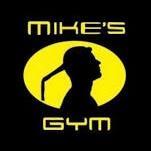Making Gravers - Calculating the angle
-
Recently Browsing
- No registered users viewing this page.
-
Topics
-
Posts
-
Here's my first proper post, copied from the one I made on the NAWCC forum last week, so far unanswered. I am working on an antique French carriage timepiece. It's a good make (Hollingue Freres who produced for Drocourt), with lever platform by Joseph Soldano (who also supplied Dent), all freshly overhauled. It runs with a good amplitude at the usual 18000bph. But it gains time massively - about three minutes each hour (that's over an hour per day!). The wheels are all perfect with no damaged or missing teeth and the silvered Soldano platform is almost certainly the original. Now, the escape wheel has 15 teeth and its pinion has 8 leaves - all pretty common. It looks original but in the absence of any other explanation, I'm wondering if it's a replacement and if the original had 15 teeth and seven leaves. If I were to change the platform for one with an escape wheel with 7 leaves, it would obviously run slower while maintaining the 18000bph, but how much slower? Is it a simple math question of seven-eighths as fast as the current one with 8 leaves? 63mins x 7/8 = 55mins would mean it's far too slow. What am I missing here? @nickelsilver
-
If anyone can help he out with a repivot please DM me and we can talk.
-
By Willem1961 · Posted
Hello WRT members my name is Willem I am from the Netherlands I haven’t been around a lot on the forum but did asked some advice in the past which helped me a lot. I started 4 years ago with a seiko 5m42-0e69 I inherited from my father. I could wair it because the bracelet was to small. Seiko did not had spare rubber inserts any more so I had to find donor watches but unfortunately also these rubber bands didn’t last long so had to find another I but this seems to be a original SLQ003 watch strap full length and uncut also found out this strap isn’t produced anymore. Than I came to the idea to find someone who can 3D print the straps and it work out well for me and than the journey began for me. This first picture is how I started 4 years ago. I ended up like this. I found all the 0e60/69 different faces and than started to collect all the different 0e39 faces. So now I can close this chapter. From another angle. Not all the faces are shown in 1998 catalog Here you can see all different faces. I will show you later on my watches one by one Here’s is my fathers watch with the printed strap Than I started to experiment with colors. This one bought because off the bracelet but unfortunately broke so I gave it a new color -
As requested - tricky to get a clear image of the holes, but you get the idea. Notice the new crystal, another first for me, it's amazing what a new crystal does for an old watch! Oh, and the other bit I'm proud of from an 80y old watch: And photos of the movement too if interested...
-







Recommended Posts
Join the conversation
You can post now and register later. If you have an account, sign in now to post with your account.
Note: Your post will require moderator approval before it will be visible.